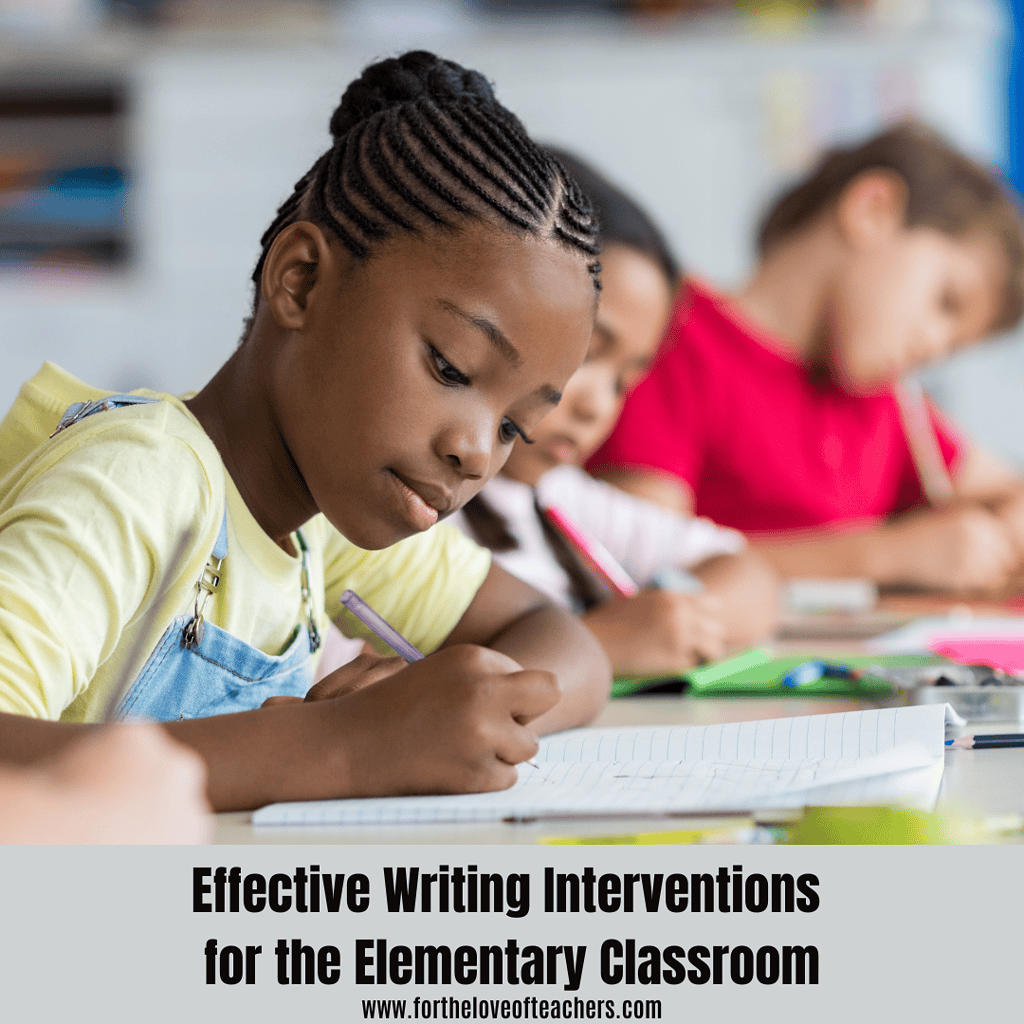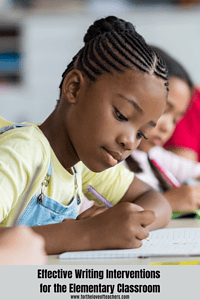Writing is a fundamental skill that serves as a foundation for communication, learning, and critical thinking. However, many young students struggle with different aspects of writing, from forming letters to constructing coherent paragraphs. Implementing targeted writing interventions can help students develop confidence and proficiency in their writing abilities. Here are some practical and effective strategies to support elementary students’ writing journey with some resources to help you along the way.
1. Explicit Instruction in Writing Skills
Teach them! Students benefit from direct, explicit instruction in writing mechanics, sentence structure, and organization. Model the writing process step by step, using think-alouds to demonstrate brainstorming, drafting, revising, and editing. Do not skip teaching and modeling all of this. Reteach and remodel if you need to. Providing graphic organizers and anchor charts can help students visualize how to plan and structure their writing.
Resources to help you:
Writing Process Posters and Student Trifolds, Writing Process Posters and Student Checklists, Revising Checklist Posters
Writing Sentences and Paragraphs, Writing Hooks and Endings
2. Small Group and One-on-One Conferencing
Differentiated support through small group instruction or one-on-one writing conferences allows teachers to target individual student needs. By reviewing student writing in a focused setting, teachers can provide immediate, specific feedback and guide students in improving their work.
Resources to support this:
Know where your kids are in the writing process: Status of the Class
Explicitly teach revising (don’t skip this step): Revising Checklist Posters
3. Sentence and Paragraph Framing
For students who struggle with forming complete thoughts, sentence starters and paragraph frames can provide the necessary structure. These scaffolds help students organize their ideas and gradually build writing fluency. As students gain confidence, these supports can be phased out. Sentence and paragraph framing is especially beneficial for MLL and special education students.
From the Shop: Writing Sentences and Paragraphs, Guided Writing Units
4. Interactive Writing Activities
Make writing engaging by incorporating interactive strategies such as shared writing, collaborative storytelling, and interactive journals. Partner and group writing activities encourage peer support and model strong writing techniques in a social setting.
5. Daily Writing Practice
Frequent writing opportunities help students develop fluency and confidence. Journaling, quick writes, and freewriting exercises allow students to explore their thoughts without the pressure of formal assessments. Providing prompts that align with student interests can make writing more enjoyable. This could be morning work or any 5-10 minutes you have in the day. My students love free time to write!
From the Shop: December Writing Prompts
6. Multisensory Approaches
Some students, especially young students, benefit from tactile and visual strategies. Incorporating hands-on activities like tracing letters, using magnetic letters, or writing with different tools (e.g., sand trays, whiteboards) can reinforce letter formation and writing conventions.
7. Technology Integration
Using digital tools such as speech-to-text software, word prediction programs, and online writing platforms can support struggling writers. These tools provide accessibility options and reduce the barriers that some students face with traditional writing methods.
8. Peer Review and Collaboration
Train your students to become writing coaches. Encouraging students to share their writing with peers fosters a sense of community and allows them to learn from each other. Structured peer feedback sessions help students develop revision skills while reinforcing the importance of constructive criticism.
From the Shop: Feedback Sticky Notes
9. Explicit Vocabulary and Sentence Structure Instruction
Students who struggle with writing often need additional support in developing vocabulary and sentence variety. Teaching students the parts of speech, the types of sentences, how to expand simple sentences, use transition words, and incorporate descriptive language enhances their writing quality.
From the Shop: ABC Parts of Speech, Writing Sentences and Paragraphs
10. Celebrate Writing Successes
Recognizing and celebrating student progress builds motivation and confidence. Creating a classroom writing wall, holding author’s chair presentations, or publishing student work in a class book encourages students to take pride in their writing.
From the Shop:
Write a Book: Write, Illustrate & Publish a Book (keep these books in your class library)
Memoir/Personal Narrative Story Writing Template
Final Thoughts
Writing interventions should be intentional, engaging, and tailored to the specific needs of students. By providing structured support, regular practice, and a positive writing environment, teachers can help elementary students develop the writing skills they need to succeed. Implementing these strategies can transform reluctant writers into confident communicators.
You can shop directly for writing resources at For The Love of Teachers.
Related Posts:
- Teaching Writing Through Mentor Texts
- The Secret To Getting Students To Write
- How To Make Choosing a Topic To Write About Less Painful
- How To Teach Writing Virtually
- 4 Ways To Get Your Students to Love Writing
- From The Desk of The Grading Guru and Why “Good Job” Isn’t Enough
- 5 Ways To Get Your Students Out of The Reluctant Writer’s Rut
- 4 Ways To Coach The Revision Process To Develop Writers
- Writer’s Workshop Boot Camp for the Elementary Teacher
- For The Love of Writing
Thanks for reading!
If you like it, then pin it!

Christine Weis is a passionate educator, classroom management coach, wife, and mom of two busy boys. She enjoys teaching, writing, and creating resources for teachers.







Leave a Reply